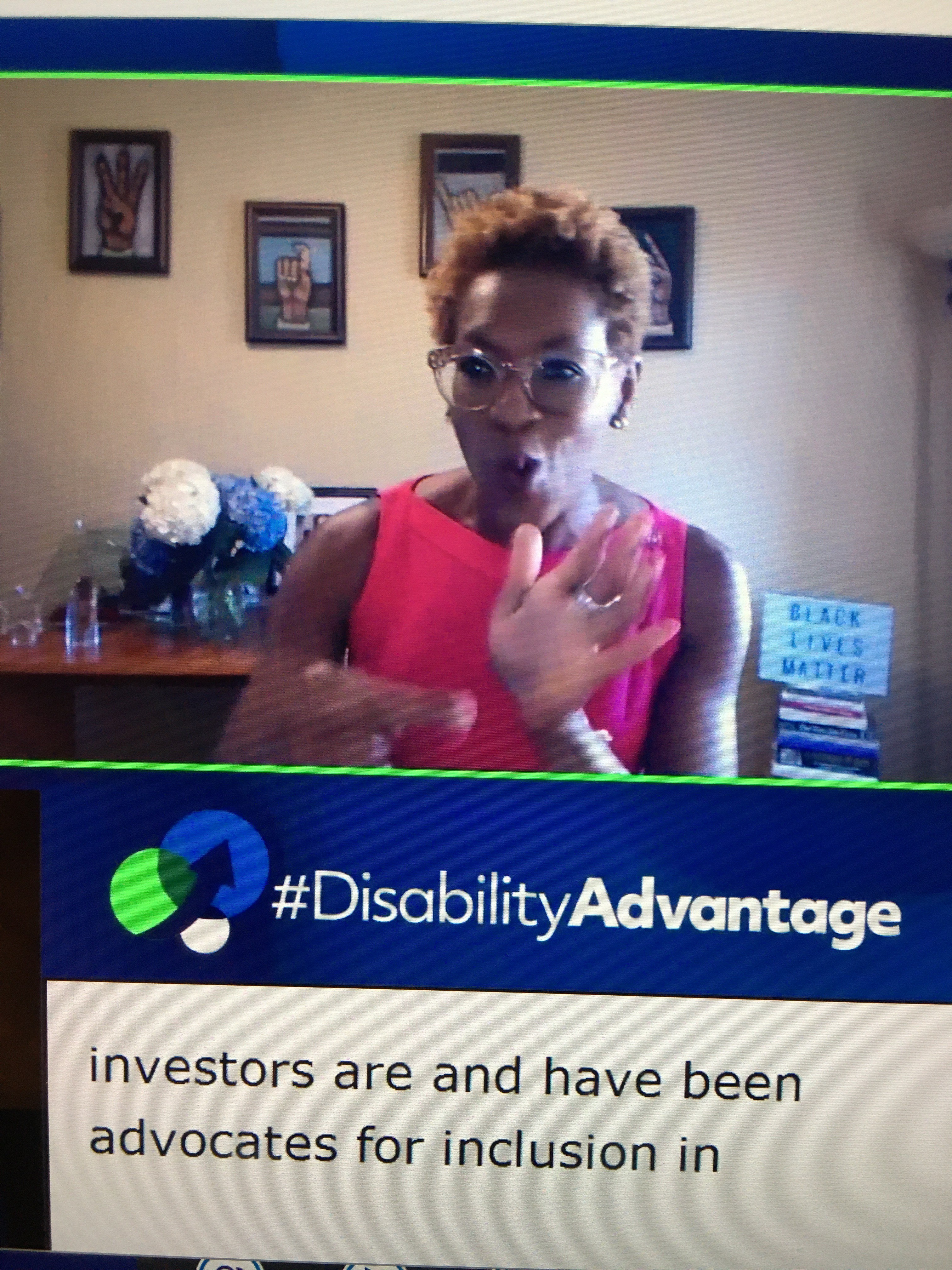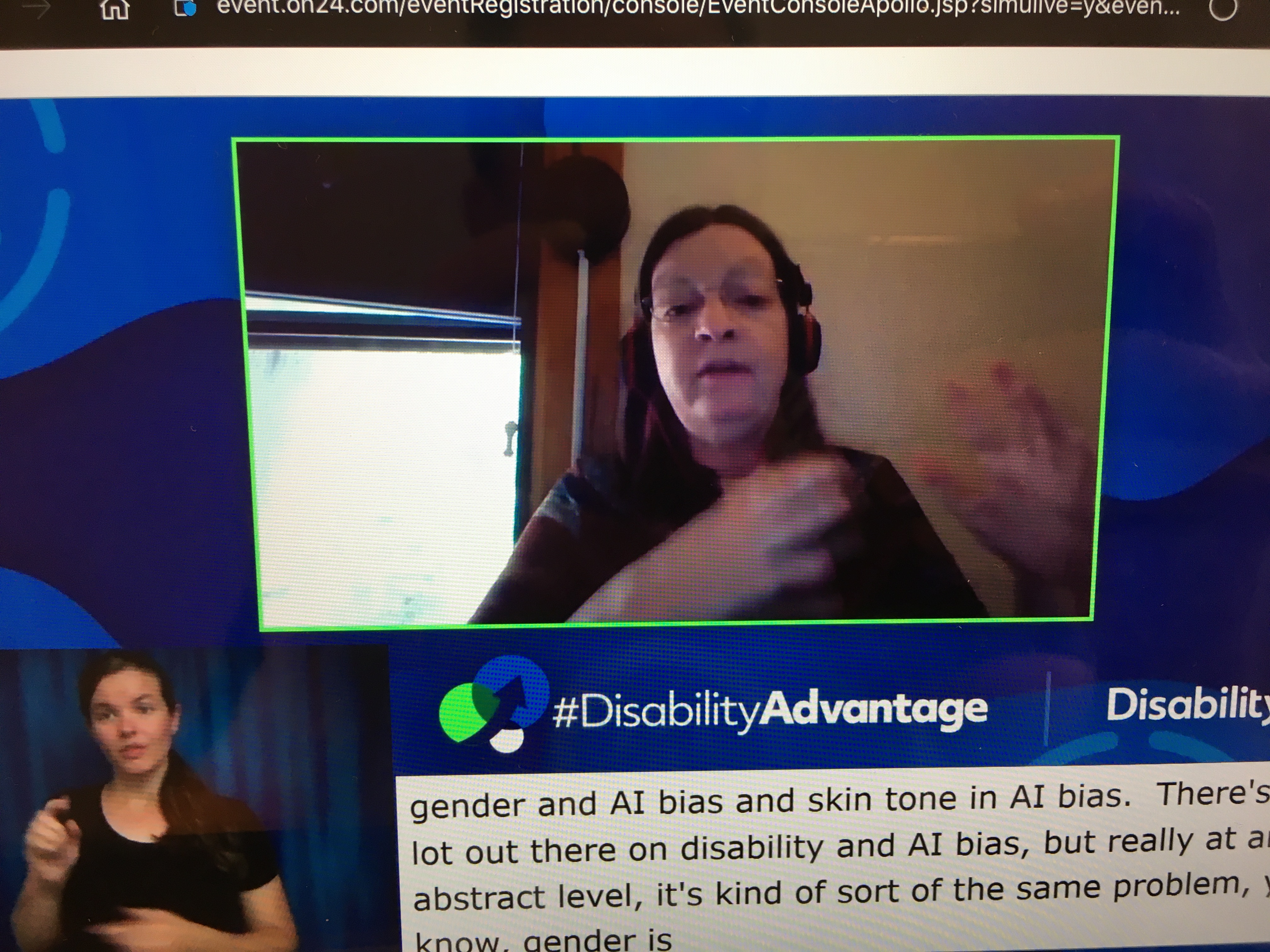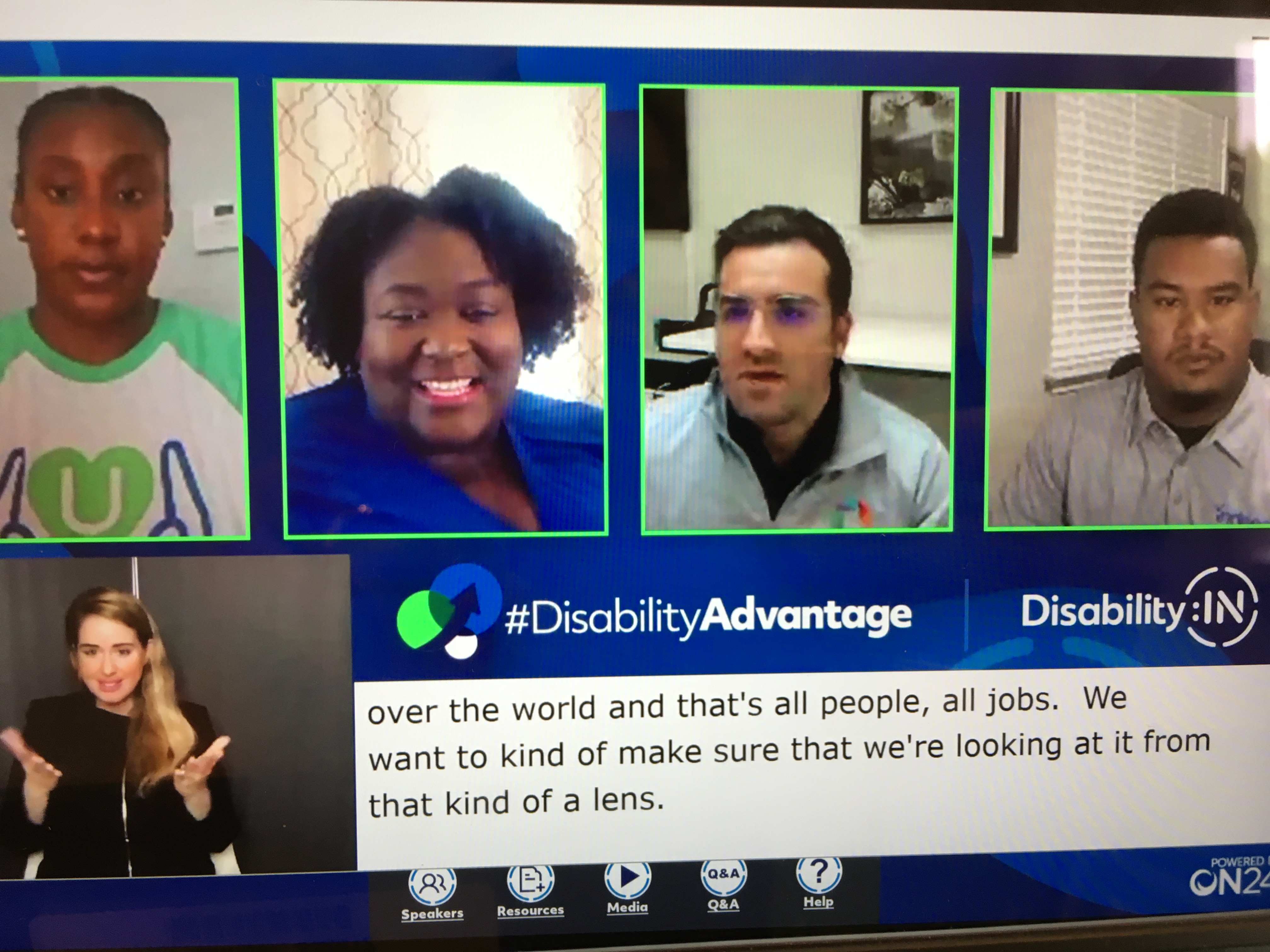Attending the Disability:IN Conference 2020 (virtually)
Was about to head to Chicago for the Disability:IN conference, however due to the pandemic, the conference is now held virtually. While the number of speakers and plenaries may not be as great as if it was held in person, it still looks like a great lineup of speakers and companies making their presence known, in other words, holding up their “We’re Hiring!” signs.
DAY ONE
Started off with some words of encouragement for companies to join the Disability Equality Index also known as the DEI. The DEI helps you and your company benchmark yourselves and improve ways to include people that you wouldn’t normally interact with. After all, to maintain and increase success (it’s proven by the way!) as a company, you’d want to avoid group-think in order to diverisify your strategies and approaches to gain greater returns investing in a broader hiring pool.
 Note: it's really great to see videos including as many disabled people as possible along with their voices: deaf, little people, autistics, amputees, wheelchair users, etc.
Note: it's really great to see videos including as many disabled people as possible along with their voices: deaf, little people, autistics, amputees, wheelchair users, etc.Some of the Breakout Sessions ranges from something you’re merely curious to those that are a must-watch. For example, the DEI index findings will be skewed towards hiring successes since that is what Disability:IN is all about – if hiring the disabled AND including them in your conversations isn’t successful without governmental assistance then there wouldn’t be an organization like Disability:IN. Are you reading between the lines yet? While I’m curious about the numbers coming back from DEI, I want to be more forward-looking and finding ways to magnify voices within our Employee Resource Groups (ERGs) and increase disability hiring.
Seeing a theme that companies are out there to show they are being good citizens to all, after all they have the resources to be much more inclusive than say small businesses. However, small businesses shouldn’t be excused from being more inclusive as corporations & governmental agencies do hire them to do some work. It appears corporations are making an effort to be more representaitve of society as a whole – we’ll see how long that lasts! That’s our job as disability advocates, professionally or not.
DAY TWO
Attended a session where the first group talks about the different roles of ERGs and how it can be used to leverage day-to-day business. Interesting stories brought up to rationalize why everyone has to have a seat at the table and with everyone bringing their own selves, we can make the business a better provider and a great place to work!
 One of the highlights of the day is seeing accessibility hero Jenny Lay-Flurrie, the Chief Accessibility Officer at Microsoft, speak. Good to see her live and all companies should aspire to the standards she has established at Microsoft: accessibility is not optional; run accessibility like a business.
One of the highlights of the day is seeing accessibility hero Jenny Lay-Flurrie, the Chief Accessibility Officer at Microsoft, speak. Good to see her live and all companies should aspire to the standards she has established at Microsoft: accessibility is not optional; run accessibility like a business.
Went through a few talks on how to leverage your ERGs in the company into something for viable that helps employees, the marketplace, and customers alike. It was suggested to focus on the major goals then get down to minor attainable goals to reach the major goal. The culture within the company needs to starting including different viewpoints and overcoming accessibility challenges. Accessibility and diversity are something that is constantly evolving according to the needs of the people building and using their products.
 Some advice shared by a group of accessibility leaders – find allies, champions, management within your organization to help you with fixing accessibility issues. Another person says with the increasing use of Agile processes, nothing is 100% accessible all the time – things will break, but they will be fixed. Memtioned that we’d get 90-95% accessibility. Third person says that accessibility is not a nice to have, it’s a must have to deliver compelling customer and employee experiences – it is a moving target. Work with people with disabilities when you design products for accessibility and inclusivity. Disability:IN has a wonderful resource for you if you see a need to set up an accessibility office within your company.
Some advice shared by a group of accessibility leaders – find allies, champions, management within your organization to help you with fixing accessibility issues. Another person says with the increasing use of Agile processes, nothing is 100% accessible all the time – things will break, but they will be fixed. Memtioned that we’d get 90-95% accessibility. Third person says that accessibility is not a nice to have, it’s a must have to deliver compelling customer and employee experiences – it is a moving target. Work with people with disabilities when you design products for accessibility and inclusivity. Disability:IN has a wonderful resource for you if you see a need to set up an accessibility office within your company.
DAY THREE
Self-reporting is always a good subject to talk about when combining employment law and disabilities. The interesting thing about employment law, companies cannot identify you as disabled, you have to tell them. I feel it’s important to self-identify so you can get the required services and company accommodations that you might need. If you didn’t self-report as having, say, Multiple Sclerosis, and you’re absent from the office often not by choice, your boss might be legally permitted to take action against frequent absences. If the disability is self-reported to the Human Resources office, then the company is required to make accommodations to satisfy your needs, i.e. alternative hours, use of disability time, allowing you to work from home, and so on.
There was an hour where students and their mentors presented app ideas for their iLab projects that can help the disabled community. Fun and interesting to see… encourages people to come up with ideas how to equal the playing field. After that a plenary on meantal health issues, a very prevalent topic in this day and age with us staying at home due to the pandemic plus more recognition of how mental health impacts all of us. The theme is to just listen, listen to people, employees, customers… listen, then provide the right support.
 AI is another great topic discussed – while it’s known AI can be an issue, it can also solve problems so it’s a double-edged sword. Speech recognition is nice, but it is not perfect so in some scenarios it can be benefical, while in others it can be harmful. As always with AI, test outliers, test with disabled people in the picture, test with a wider variety of people. Sheri from VMWare mentioned that using avatar technology involving sign lanaguge won’t necessarily translate well, in addition she mentioned eyetracking technologies can cause problems for those who has attention disorders. There are many more examples mentioned but the point is technology doesn’t solve everything all at once and there’s still so much inherent bias when any “cool” technology is developed.
AI is another great topic discussed – while it’s known AI can be an issue, it can also solve problems so it’s a double-edged sword. Speech recognition is nice, but it is not perfect so in some scenarios it can be benefical, while in others it can be harmful. As always with AI, test outliers, test with disabled people in the picture, test with a wider variety of people. Sheri from VMWare mentioned that using avatar technology involving sign lanaguge won’t necessarily translate well, in addition she mentioned eyetracking technologies can cause problems for those who has attention disorders. There are many more examples mentioned but the point is technology doesn’t solve everything all at once and there’s still so much inherent bias when any “cool” technology is developed.
 Speaking of recruiting during the pandemic, it’ll take a village to get everyone and everything on board including using a virtual whiteboard and using video conferencing tools that has captioning built-in like Google Meet/Hangouts or Microsoft Teams. No surprises there. Most companies on the Disability:IN list could be an ideal place for disabled people to apply for because they have an huge incentive to increase their talent base and the base not only starts with laypeople but gets enriched by the deaf & disabled. Kudos to the D:I companies for stepping up to the plate!
Speaking of recruiting during the pandemic, it’ll take a village to get everyone and everything on board including using a virtual whiteboard and using video conferencing tools that has captioning built-in like Google Meet/Hangouts or Microsoft Teams. No surprises there. Most companies on the Disability:IN list could be an ideal place for disabled people to apply for because they have an huge incentive to increase their talent base and the base not only starts with laypeople but gets enriched by the deaf & disabled. Kudos to the D:I companies for stepping up to the plate!
CONCLUSION
Accessibility to me is a win for all regardless because when companies maneuver to accommodate their employees’ needs, it is easy to incorporate the same strategies and methodologies meeting customers’ accessibility needs. Some of the topics brought up in the conference are all old hat for most in the deaf & disabled community. I’m more interested in how we can scaffold more consistent building blocks for the future. I hope future Disability:IN conference would be geared towards those who are actively trying to solve problems and looking for ways to fast-track resolution. One example of future thinking is making a checklist available on establishing say an “Accessibility Center of Excellence” or a “Disability Office” of a typical Fortune 500 company with a budget and responsbilities of that group. Be nice to see standardization happen so employers, employees, and customers know what to expect when interacting with members of various deaf & disabled communities, AND THEN build up from there. All in all, I think Disability:IN did a MAGNIFICENT job with their first virtual conference – I do hope they can share what technologies and services they used so other companies may follow in their footsteps when hosting conferences that span all disabilities.